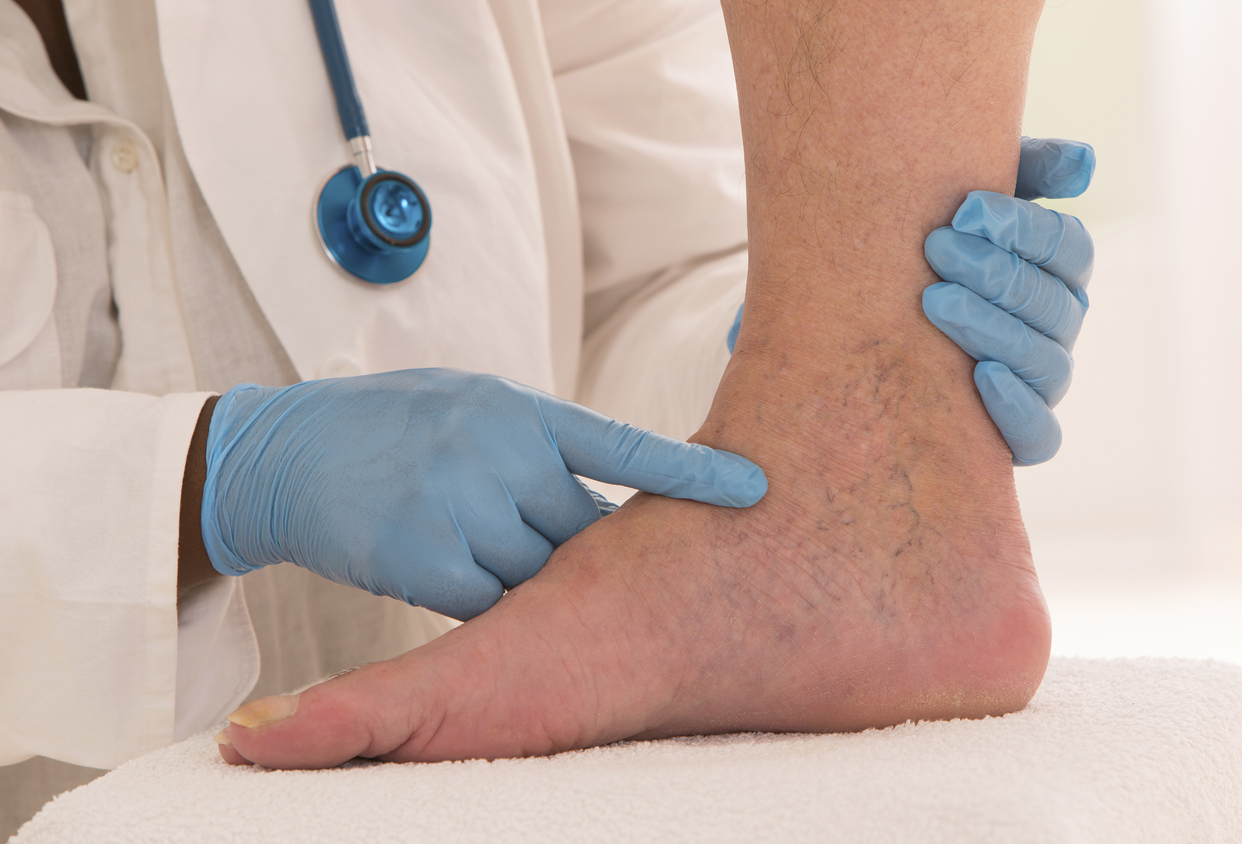
Varicose veins are a red flag something may be wrong in your vascular system — and a signal it’s time to visit a vein specialist.
To get an idea of just how important your circulatory system is to your overall health, consider the fact that if you stretched out your body’s arteries and veins in one continuous line, it would measure 60,000 miles. That network performs a vital function by moving oxygenated blood to your organs and tissues. So whenever a breakdown or malfunction in the system occurs, you will likely suffer a health issue.
One of those issues could be varicose veins. Although veins throughout your body are responsible for pumping blood back to the heart with the help of tiny valves, leg veins have the toughest job of all because they’re farthest from the heart and push against the greatest volume of gravity. As blood backs up in a vein due to a weakened valve, the vein walls stretch to their limit and eventually emerge as bulging ropes of varicose veins on the legs. More importantly, varicose veins are a red flag that it’s time to get your veins checked by a vascular specialist.
Table of Contents
ToggleWhen to Get Your Veins Examined
Many people don’t experience any of the bothersome symptoms of varicose veins and consider them a cosmetic issue. With or without symptoms, however, varicose veins warrant a trip to a vein specialist to assess your vein health and detect any serious underlying medical issues that require treatment. Here are four ways to know it’s time for a diagnosis:
- Your varicose veins impact your quality of life. Do your legs feel heavy by the end of the day? Are you unable to stand for long periods because your legs feel weak? Do pain and itchiness keep you up at night? If persistent leg pain and swelling make it difficult to complete everyday tasks and impair your quality of life, you need to pursue treatment.
- You have symptoms, but don’t see bulging veins. Varicose veins hidden deep within the leg aren’t always visible because they may be covered by fatty tissue. Nevertheless, you may still experience pain, swelling, cramping, and other uncomfortable symptoms of varicose veins. Any changes in how your legs feel suggest there could be a problem within the veins.
- You see dry, scaly patches on your calf and ankle. When blood doesn’t flow through your veins properly it affects your skin, leaving behind dry, flaky patches on your legs and ankles. Left untreated, these patches could grow into painful ulcers. Although leg ulcers might be caused by other conditions, such as diabetes, the sores could also be due to damaged veins.
- You notice a bump on your varicose vein. A lump on your leg could indicate a blood clot. A blood clot in a superficial vein on the leg is known as phlebitis and isn’t considered a serious condition. The pain and swelling of phlebitis are typically localized in one area and resolve within weeks. On the other hand, if the swelling extends over a larger area of your calf, it could indicate a potentially dangerous blood clot in a deeper vein, or a deep vein thrombosis (DVT).
What to Expect When You Visit a Vein Specialist
A vein specialist is trained to diagnose and treat vascular disorders, such as varicose veins and DVT. During your first visit, the doctor will perform a physical exam and record your health history and symptoms. Then, the specialist will do a diagnostic imaging test known as a Doppler ultrasound. Using high-frequency sound waves to get a picture of how blood flows through the veins, an ultrasound pinpoints the location of a varicose vein as well as a blood clot. The test is painless and takes about 30 minutes.
After reviewing all the test results and your health status, the vein specialist will confirm a diagnosis and recommend treatment options designed for your individual condition and preferences. Today, varicose veins are treated by several minimally invasive procedures done in the office that are far cry from the painful vein stripping of years past. These include sclerotherapy, which uses a safe solution injected into the vein to collapse it, and endovenous radiofrequency ablation, a surgical method that seals off the vein by administering radiofrequency waves. Those are just two of the often-used therapies for varicose veins, but there are other innovative procedures available.
Is it Time to Get Your Veins Checked?
If you’re experiencing symptoms that could be related to your leg veins, you should get the expert opinion of a vein specialist. The staff at the Vein and Vascular Institute employs modern technology to diagnose vein problems. After a diagnosis is made, we offer the latest in varicose vein treatments that are virtually painless and require little downtime from your normal activities. Contact us today for an appointment.
